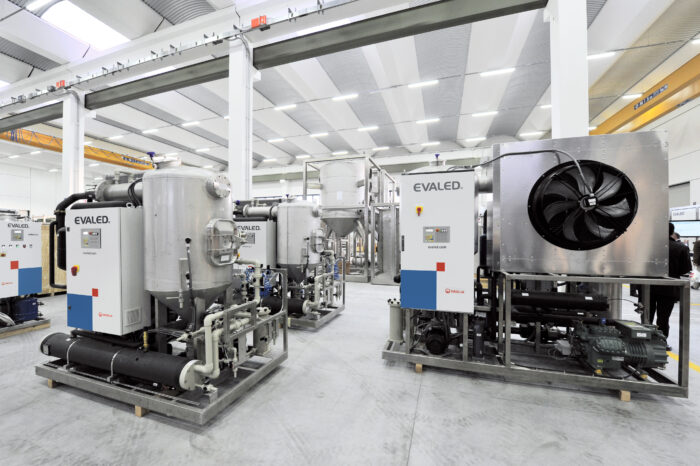
On a global level, wastewater treatment is an increasingly critical topic of discussion that has been addressed at the very highest levels of government and major corporations.
In order to find a sustainable approach, companies can employ many different strategies to help themselves go beyond mere compliance and begin the process of positively impacting global water quality.
According to a recent United Nations World Water Development Report published on UN.org, more than 80% of all the wastewater from industry, homes, cities and agriculture is released to the environment without adequate treatment and flows back into the ecosystem via lakes, rivers and other bodies of surface water. This process repeats every day across the planet, polluting the environment while losing valuable nutrients and other recoverable materials in the process.
Often taken for granted, water is a finite resource with increasing international demand.
Each year in March, World Water Day serves as a reminder from the United Nations that a daily commitment is necessary for the successful reduction and reuse of wastewater. The theme for World Water Day 2019 was “Leaving No One Behind,” the central promise of the UN’s 2030 Agenda for Sustainable Development.
The goal of this agenda is to cut the proportion of untreated wastewater in half and increase safe water reuse by 2030. Guy Ryder, the director-general of the UN International Labor Organization (ILO) and the Chairperson of UN-Water, believes that in order to achieve this goal, there must be a commitment to improve the management of wastewater from both the business community and the general public.
Before and After Ultrafiltration Jars Transparent BackgroundWastewater treatment has become an increasingly critical part of plant operations over the last decade, and manufacturing companies across all industrial sectors are prioritizing the reduction of water consumption. Compliance with ever-tightening federal regulations for wastewater treatment, handling and disposal – such as the Clean Water Act (CWA), the Resource Conservation and Recovery Act (RCRA) and the Safe Drinking Water Act (SDWA) – requires finishing industry executives to be focused on the wastewater issue. There are additional regulations on the state and local level that companies must adhere to as well.
Additional motivating factors that are potential drivers for recycling wastewater include strengthening a company’s public image, improving the overall working environment, boosting employee morale, and adhering to ISO 14001 initiatives. These days, promoting a “green” operation by putting a priority on environmental awareness and sustainable operations will translate to happy workers, loyal customers and satisfied investors.
Of course, the ultimate motivator is almost always related to cost. From a strictly monetary standpoint, it makes complete sense for finishing shops to adopt a formal wastewater treatment and reuse policy, as it allows them to dramatically cut rising operational costs while increasing profitability.
Most of the hazardous waste in surface finishing comes from wastewater that is generated by rinse water. Due to the substantial amount of this waste within this $155 billion-dollar industry, companies are taking quick action to mitigate the environmental risk associated with dumping and consumption.
Disposing of spent fluids is expensive. Companies must pay for handling, trucking and treatment by their local Publicly Operated Treatment Works (POTW). These costs can vary based on local water supplies, fuel prices, trucking prices and the edicts of the POTW. Adding to the expense is the clean water required to replace the initial volume.
The obvious goal should always be to recycle wastewater internally. This will increase equipment life, improve product quality, reduce maintenance, and prolong the usage of working fluids. Implementing a treatment system means when the time comes to dispose of wastewater, finishing shops can virtually eliminate the volume for disposal or haul-away.
EVALED Evaporator PC F 4 6At the heart of any system is the equipment. For finishing shops that are concerned about the impact their wastewater has on both the environment and their bottom line, there are a variety of options available, each designed to perform specific types of treatment and deliver a quick return on investment (ROI).
Here are the most common types of wastewater equipment, how they operate, and how they impact a finishing business’ profitability:
1. Ultrafiltration (UF) Systems
The concentration and chemical form of the soluble heavy metals in a particular wastewater stream varies, depending on the industry and the mix of operations at a processing site. For example: In the plating industry, specialty chemical suppliers have developed alloy technologies to maximize the high corrosion resistance of the metal.
The advanced membrane technology used in ultrafiltration (UF) provides a simplified, effective and superior solution for removing soluble heavy metals from wastewater produced by many processes including electroplating and electroless nickel plating. UF systems allow finishing operations to reuse up to 98% of their surface finishing wastewater without the use of chemical additives.
Complexors used in today’s surface finishing industry make the wastewater extremely difficult to treat through conventional clarifier techniques. Tubular ultrafiltration is a very effective method of removing virtually all of the precipitated metal hydroxide/sulfides/carbonates from the wastewater stream. The resulting high-quality permeate can be fed directly to reverse osmosis equipment for reuse, reclaimed “as is,” or discharged to the POTW.
Membrane technology provides numerous advantages to the process of surface finishing wastewater treatment, including:
2. Reverse Osmosis Systems
Reverse Osmosis (RO) technology removes dissolved solids and impurities from water by using a semi-permeable membrane, which allows the passage of water but leaves the majority of dissolved solids/salts and other contaminants behind. The RO membranes require a greater-than-osmotic pressure and high-pressure water to achieve the desired result. The water that passes through the RO membrane is called the permeate, and the dissolved salts that are rejected by the RO membrane are called the concentrate.
A properly designed and operated RO system can remove up to 99.5% of incoming dissolved salts and impurities, as well as virtually all colloidal and suspended matter from the most challenging waste and feed water applications. Typically used in industrial, metalworking and surface treatment operations, RO technology is the final process after ultrafiltration or the chemical treatment of waste and feed water.
3. Vacuum Evaporation and Distillation
Galvanizing Metallic Parts in Zinc BathEvaporation is a natural phenomenon and a clean separation technology recognized as a Best Available Technique (BAT) in several wastewater treatment processes. Because it removes the water from the contaminants, rather than filtering the contaminants from the water, it is distinct from other separation processes.
No other technology can attain such high water-recovery and concentration rates as vacuum evaporators, which accelerate the natural evaporation process to treat and distill industrial wastewater amounts from 1 to 120 tons per day. They are capable of achieving residual total solids concentrations of more than 85%.
The three primary vacuum evaporators are:
4. Paper Bed Filters
These types of filters work by gravity and utilize disposable paper media or permanent filter media. This produces a positive barrier, which removes solids from all free-flowing industrial process liquids. Paper bed filters are suitable for applications involving low- to medium-stock removal of ferrous and non-ferrous metals, as well as organic and inorganic contaminants such as glass, rubber and plastic. Paper bed filters can extend coolant and tool life by an average of 27%, in addition to increasing surface finish quality.
Standard paper bed filtration units are available with (or without) magnetic separation and can handle flow rates of up to 130 gallons per minute (GPM). Different classes of filter media allow for adjustments of micron clarity. A drum-type model, which can process up to 500 GPM of fluid, occupies one-third the floor space of a paper-bed filter.
5. Solid Bowl Centrifuges
Water Tank with ManThese units optimize centrifugal force (instead of consumable media) to separate solids from liquids in metal processing applications where removal of fines is important for recycle and reuse goals. Process liquid is either pumped or gravity-fed to the centrifuge inlet. Process solids are then centrifugally separated from the liquid phase and collected in an easily removable rotor, also known as a liner. Clarified liquid overflows the rotor into the outer case and is returned by gravity to the process, which minimizes the cost of hauling waste coolants and water away from the facility.
Solid Bowl Centrifuges provide high-performance liquid/solid separation for all types of particles – metallic and non-metallic, ferrous and non-ferrous – and are available in both manually cleaned rotor style (with a reusable liner) and fully automatic self-cleaning designs.
6. Tramp Oil Separators
In this wastewater treatment solution, contaminated fluid flows through a series of baffles and a porous media bed, where free and mechanically dispersed oils are separated from the fluid. The clarified fluid then flows over the effluent discharge weir back to the reservoir for reuse. The collected oils, inverted emulsions, and other waste materials are collected at the top of the separator and automatically discharged into a suitable receptacle. Using gravity flow and coalescence, these separators can reduce tramp oils to less than 1% in a single pass while utilizing no consumable products.
Tramp oil separators can also:
Achieve system payback (ROI) in 6 months or less.
7. Vacuum Filters
Capable of continuous operation, vacuum filtration systems can eliminate significant downtime. Virtually maintenance-free and delivering high-sludge-volume elimination, these systems will also deliver lower production costs. Disposable media vacuum filters utilize a vacuum chamber to draw contaminated coolant through the disposable filter media. By applying the proven principle of optimal filtration through contaminate or sludge build-up, a filter cake forms on the media. These units are capable of impressive flow rates of up to 2,000 GPM.
Semi-permanent vacuum filters further reduce operation costs by eliminating the need for disposable media. Back flushing with clean coolant keeps the filter clean without requiring large volumes of air. The back-flushed solids drop from the filter element and settle into a tank, where they are removed via a chain dragout/flight arrangement. These units require minimal floor space and are completely self-contained, simplifying maintenance and operation.
Considered an increasingly critical topic of global concern, wastewater treatment can be addressed with any number of existing, efficient and effective systems. While it certainly makes business sense to implement such a process, it can appear to be a daunting task for finishing shops that are unfamiliar with the treatment and re-use of in-house wastewater. On the surface, up-front costs often associated with adding a wastewater treatment system can seem prohibitive.
Members of the industrial finishing community can employ many different strategies to help themselves go beyond mere compliance and begin the process of positively affecting water quality. This can simultaneously bolster their brand, their ROI and their bottom line.
Read the full article at productionmachining.com.

Tim Hanna is Vice President of Business Development of PRAB.